Living Sanctuaries: The Natural Wealth Sustained by Mangroves
- agranelli3
- Jun 23
- 4 min read
Updated: Jun 25
By Lucy Calderón
With their remarkable adaptation to brackish water and flooding, mangrove ecosystems—comprising various families of trees, palms, and ferns—thrive in zones where land and sea intertwine. These ecosystems support not only a rich diversity of flora and fauna—some of it unique or endangered—but also the coastal communities who depend on them.
Typically, mangroves form narrow bands along shorelines, particularly around estuaries, coastal lagoons, river mouths, and beachfronts. In Guatemala, mangroves are found on both coasts—Pacific and Caribbean—as well as along the San Pedro River in the department of Petén, the country's most inland mangrove site.
Of the eight mangrove species in Guatemala, six are trees and two are ferns of the genus Acrostichum. All are uniquely suited to oxygen-poor soils and extreme salinity and humidity, forming a complex and dynamic ecosystem. These species include:
Rhizophora mangle L. (Red mangrove)
Avicennia germinans (L.) L. (Black mangrove, “madresal”)
Avicennia bicolor Sandl (Ixtatén mangrove)
Laguncularia racemosa (L.) CF Gaertn (White mangrove)
Conocarpus erectus L. (Buttonwood mangrove)
Acrostichum aureum L. and Acrostichum danaeifolium Langsd. & Fisch (Mangrove ferns)
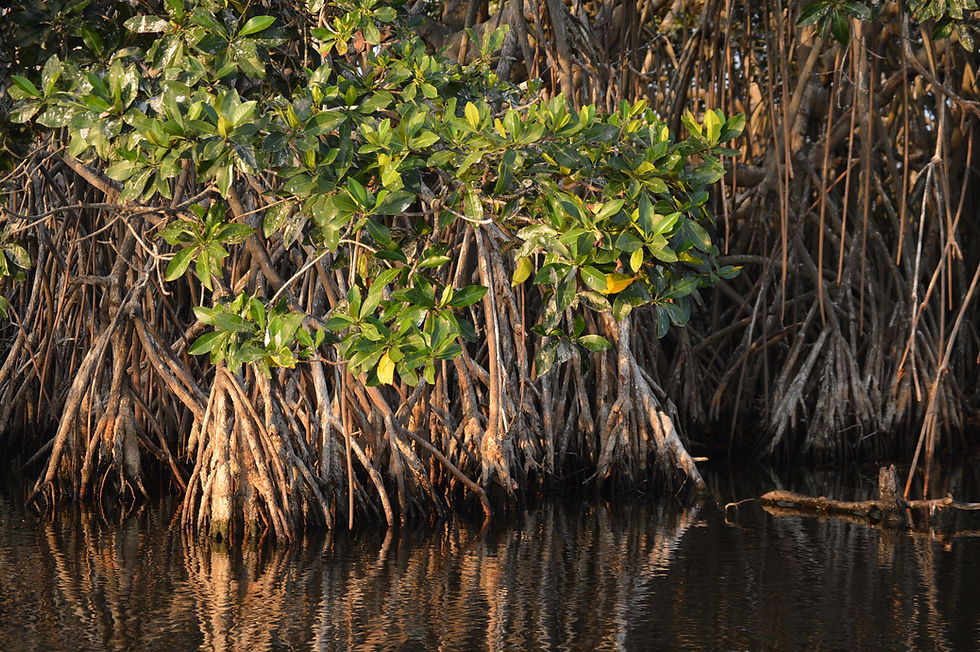
Mangroves serve as nesting, breeding, refuge, and feeding grounds for reptiles such as the boa constrictor (Boa constrictor) and spectacled caiman (Caiman crocodilus), according to Cesar Zacarías, Mangrove Coordinator at the National Forest Institute (INAB).
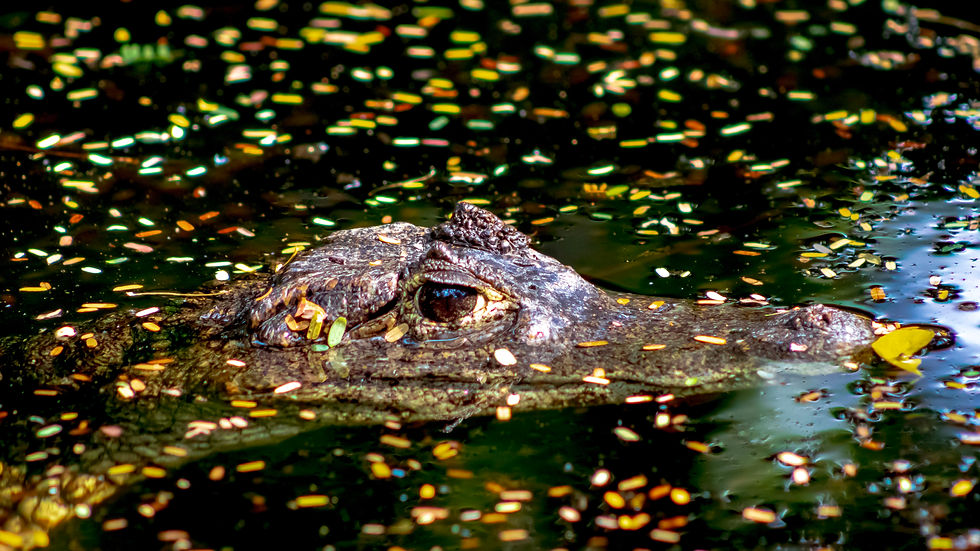
These habitats also host mammals like white-tailed deer (Odocoileus virginianus), marsupials such as opossums (Didelphis marsupialis), anteaters (Tamandua mexicana), and river otters (Lontra longicaudis).
The forest floor teems with crabs, which help decompose organic matter—like fallen leaves and branches—and aerate the soil through their burrowing, essential processes for new plant growth and ecosystem health.
Seventeen crab species are known to inhabit Guatemala’s mangroves; An anteater forages among mangrove trunks in search of food. Photo: Zacco
Among the emblematic bird species gracing these verdant coastal sentinels are white herons (Ardea alba), great blue herons (Ardea herodias), wood storks (Mycteria americana), and roseate spoonbills (Platalea ajaja). Ducks also inhabit these areas, though they’re more elusive, adds Cesar.
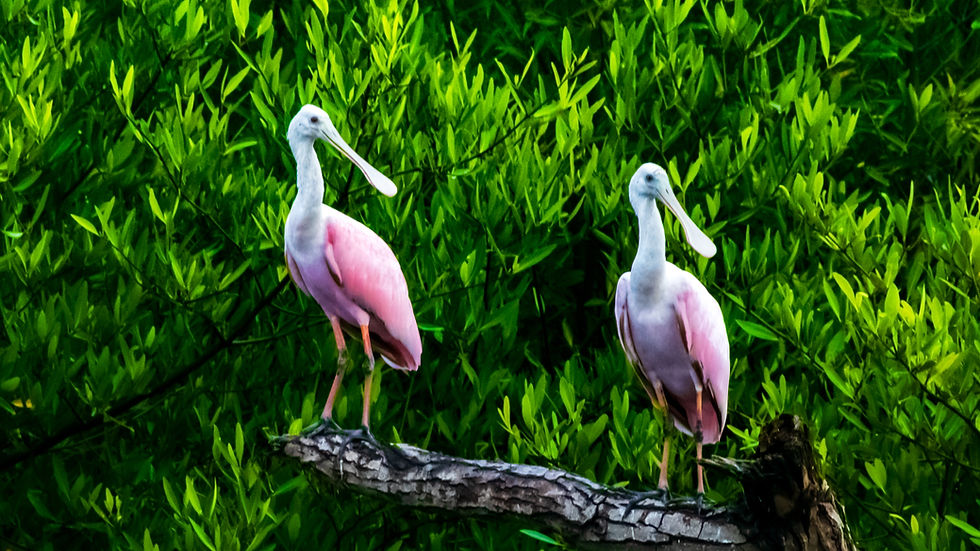
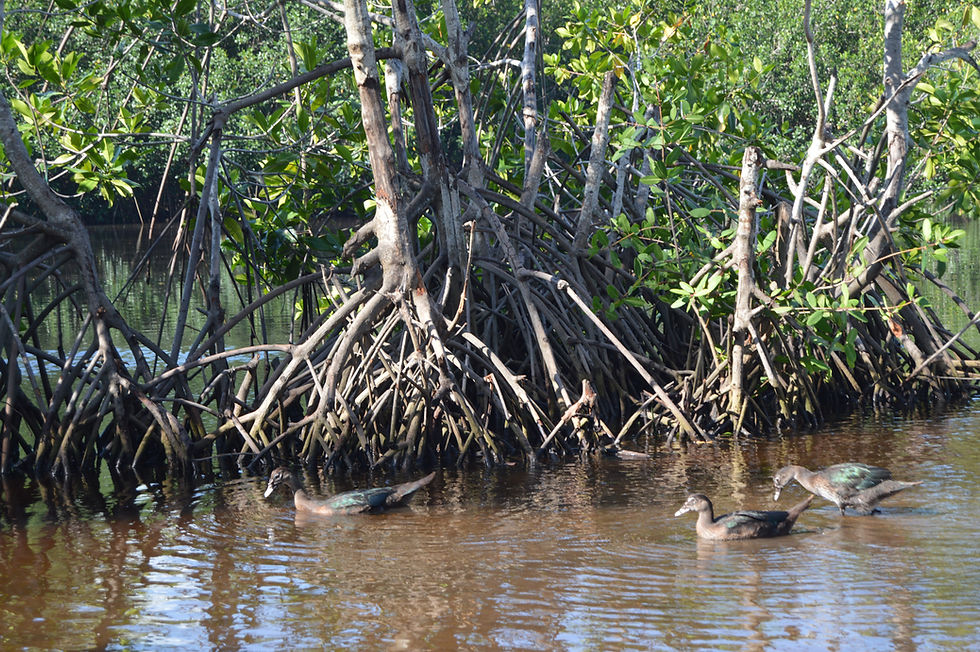
For marine life, mangroves are essential as nurseries, shelters, and feeding grounds for reef fish and commercially important species that later migrate to the open sea. They also provide habitat for manatees (Trichechus manatus manatus), a flagship species of the Caribbean classified as endangered by the IUCN Red List and CITES due to habitat loss and water pollution. According to the Guatemala Coastal Marine Alliance, there are an estimated 150 manatees remaining in the country.
Mangrove ecosystems also support a variety of associated plant species. In the Caribbean regions, such as Izabal, over 15 orchid species can be found, including Epidendrum, Mimercophyla, and Catasetum.
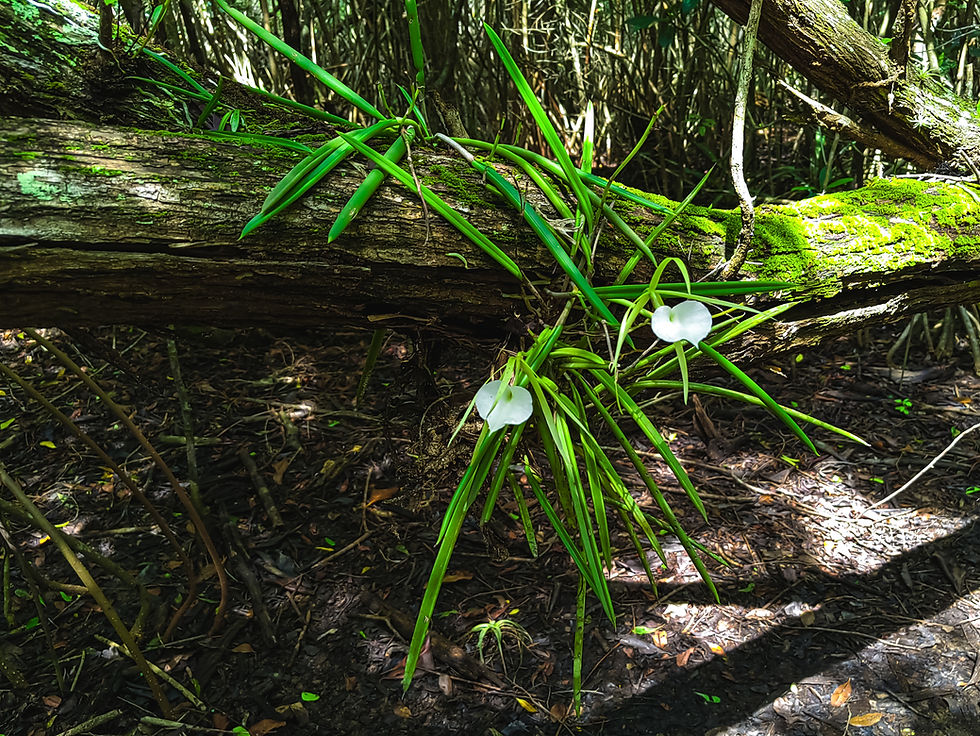
In the Pacific, key species include bromeliads (Bromelia spp.), lichens, and pollinators like stingless bees (Melipona), which locals prize for their medicinal honey, according to Cesar.
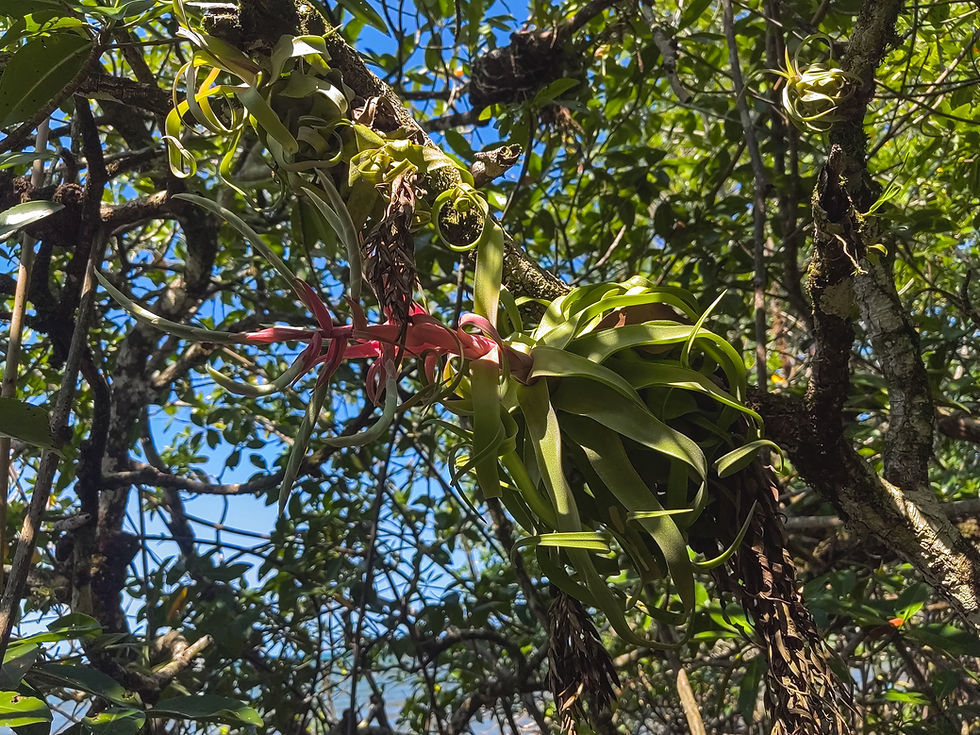
Fungi growing among mangrove roots and fallen logs also play a vital role in the carbon cycle by breaking down organic matter. However, many of these fungi have yet to be fully identified. So far, INAB has documented 40–50 species, mainly classified by genus, including Aspergillus, Penicillium, and Fusarium.
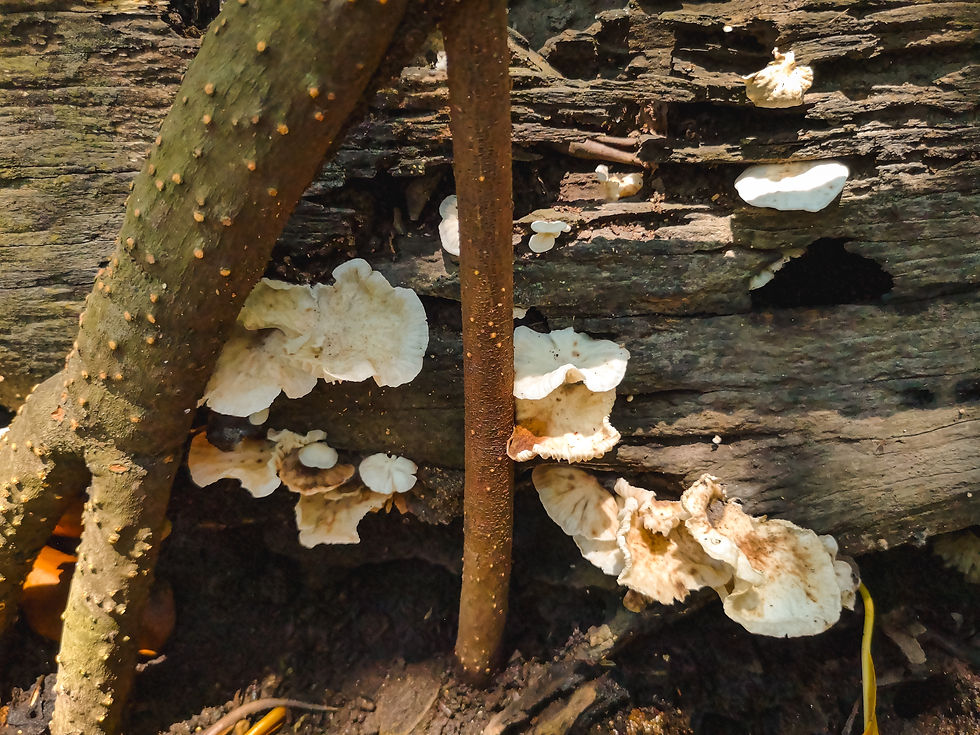
An Ecosystem at Risk
According to Global Mangrove Watch (2021), 51% of Guatemala’s mangrove coverage is in good condition, while the rest shows signs of degradation. Major threats include agricultural expansion, urban development, and climate change, which has begun altering temperature and humidity patterns, increasing fungal diseases that affect mangroves.
To address this, INAB and environmental organizations such as EcoLogic Development Fund are advancing ecological restoration and sustainable management projects to safeguard these ecosystems, which are closely linked to seagrasses, coral reefs, and tropical or dry forests.
On the Pacific side, mangroves are associated with seasonally dry forests and form communities that range from coastal to inland floodplain forests. In contrast, Caribbean mangroves coexist with broadleaf forests and floodable jungles, home to trees such as zapotón (Pachira aquatica Aubl.), cahué (Pterocarpus officinalis Jacq.), and Santa María (Colophyllum brasiliense Cambess.).
“Mangroves are much more than just mosquito breeding grounds, as some people believe,” Cesar emphasizes. “They are centers of life, pollination, food, and refuge. They’re indispensable to the ecological balance and resilience of our coasts.”
“Apart from their ecological value, mangroves are a lifeline for coastal communities,” adds agronomist Mario de León, EcoLogic’s Program Officer for Guatemala. “They protect people from storms, high tides, and hurricanes; provide fruit and both timber and non-timber products; support artisanal fishing; and ensure food security and economic livelihood.”
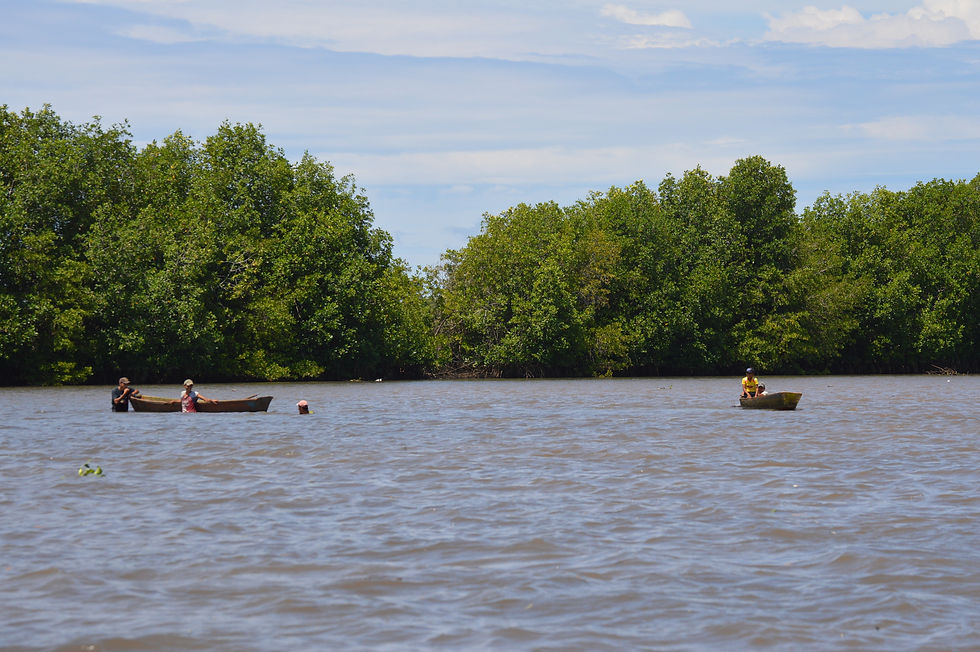
Lucy Calderón is the founder, reporter, photographer, and editor of EcocienciaGT.
.png)







Comments